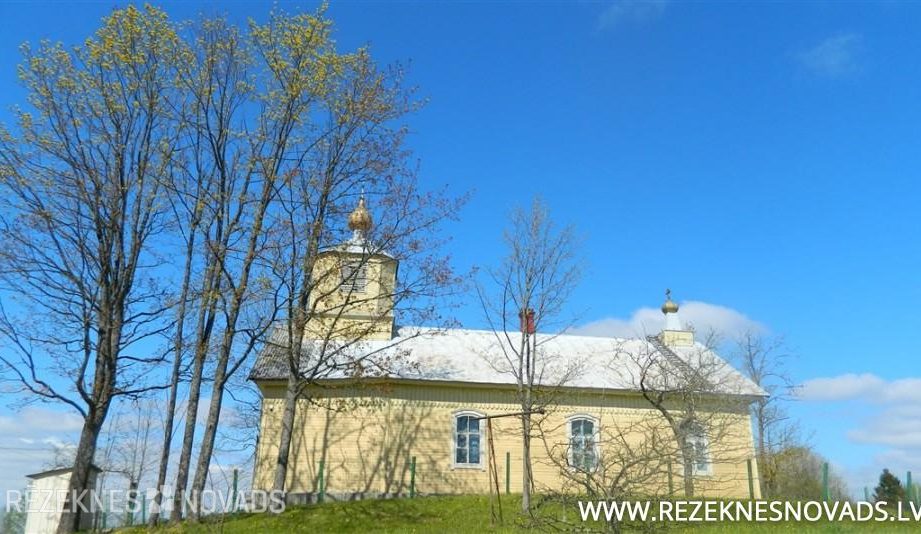Viewing objects and historical persons
The parish population deals with agriculture and rural tourism, there are several guest houses, “Dana”, “flame houses”, “Osmany”. The guest house “Razna pearl” offers to rent boats and water bicycles for trips along Razna Lake, as well as after prior logging organizes trips with a motorboat. There is a bathing site in Lake Razna's village, where water bikes and boats are available, a ponton kindle. In favourable winter weather, a free-lit skating skater is available in Lipuškos. A number of tourist trails have been created for tourism development in the parish area, with directions by which the parish cultural history monuments – the 13 th century Volkenberg Castle ruins in Makoņkalns (written in 1263), the Udreov devil stone, the Jaunsteshu devil foot, the broad stone, the spine and other interesting objects, can be considered. To see Volkenberg Castle ruins, a comfortable staircase brings a comfortable staircase. A memorial plate was discovered at the level of the hill for the visit of President Kārlis Ulmanis, President of Latvia's First Free State, in 1938 during his visit to Latgale. In 2013, an additional infrastructure was created in the Cloud Mount - now there is an opportunity to move along a path, which is installed on the wall of the castle, additional stairways and information stands are created.
The prayer of Lipushku's Old Believers is also worthy. It should be noted that Lipuški was first mentioned in 1893, emphasising that the largest Old Believers' congregation in the Baltics is here.
Every two years, on the first Saturday of July, THE festival of Volkenberg Castle takes place IN Mākoņkalna. Since 1982, there is a folklore set in the parish of Mākoņkalna. Mākoņkalna parish-born lawyer and state employee, first newly established Latvian State Justice Minister Viktors ants, literature scientist Editte Olupe, poet Olga Orsa (Afanasyeva), has worked in the parish administration 8. 9 th and 10. Saeima deputy Stanislav Skesters.
Lipuški Old Believers' House of Prayer
The church was built in 1904. In 1893, lipuškos was the largest congregation of the Old Believers in the Baltics.
The lipuški is located on the south bank of Lake Razna, where the old-believers are settled from ancient times, according to ancient Old Believers' cemeteries in the surrounding area. The current prayer of Lipušku Old Believers was built in 1904. It has suffered from robbers over the years, so there are no real icons in the rooms, but photoreproduction. By 1905, the gods could only be built so that they were not distinguished from the usual house, that is, without calls, crosses and domes. Also, Lipushku's prayer house was built as a living building, but there was a rumor that there was a church service here. The local authority wished to close this house, but it failed, as the Old Believers parked a picture of the cart beside the icons, which embarrassed and prevented them from closing the house.
By 1905, the gods could only be built so that they were not distinguished from the usual house, that is, without calls, crosses and domes. The Lipušku prayer house was also built as a living tree. The prayer house has 2 towers, which initially had up to 6 small calls (1911), in the Samgin factory in Moscow. At present, only three are preserved in the tower of the church.
The gods have suffered more theft, so they lose some of their valuable heritage. The accent of indoor equipment is currently a luxurious metal headlamp supplemented by enamel and crystal pendants. The prayer of lipušku is built in the construction forms typical of the old Believers, where the men's side is strictly separated.

Mākoņkalns (Volkenberg castle)
In the Middle Ages, there was a Wolkenberg castle in the Mountain Hill, the ruins of which were still preserved. It was the oldest fortress in Lotigola's land, which the Livonian Order won after the last division of Jersica in 1239. There is news that there was a wooden castle here in 1236. There are indications of the use of the castle in 1347 and 1350, during the 14 th and 15 th centuries with Lithuanians, the castle was devastated and was no longer restored.
Today only the large wall fragments of the wall and the fallen subterranean depths have been preserved.
